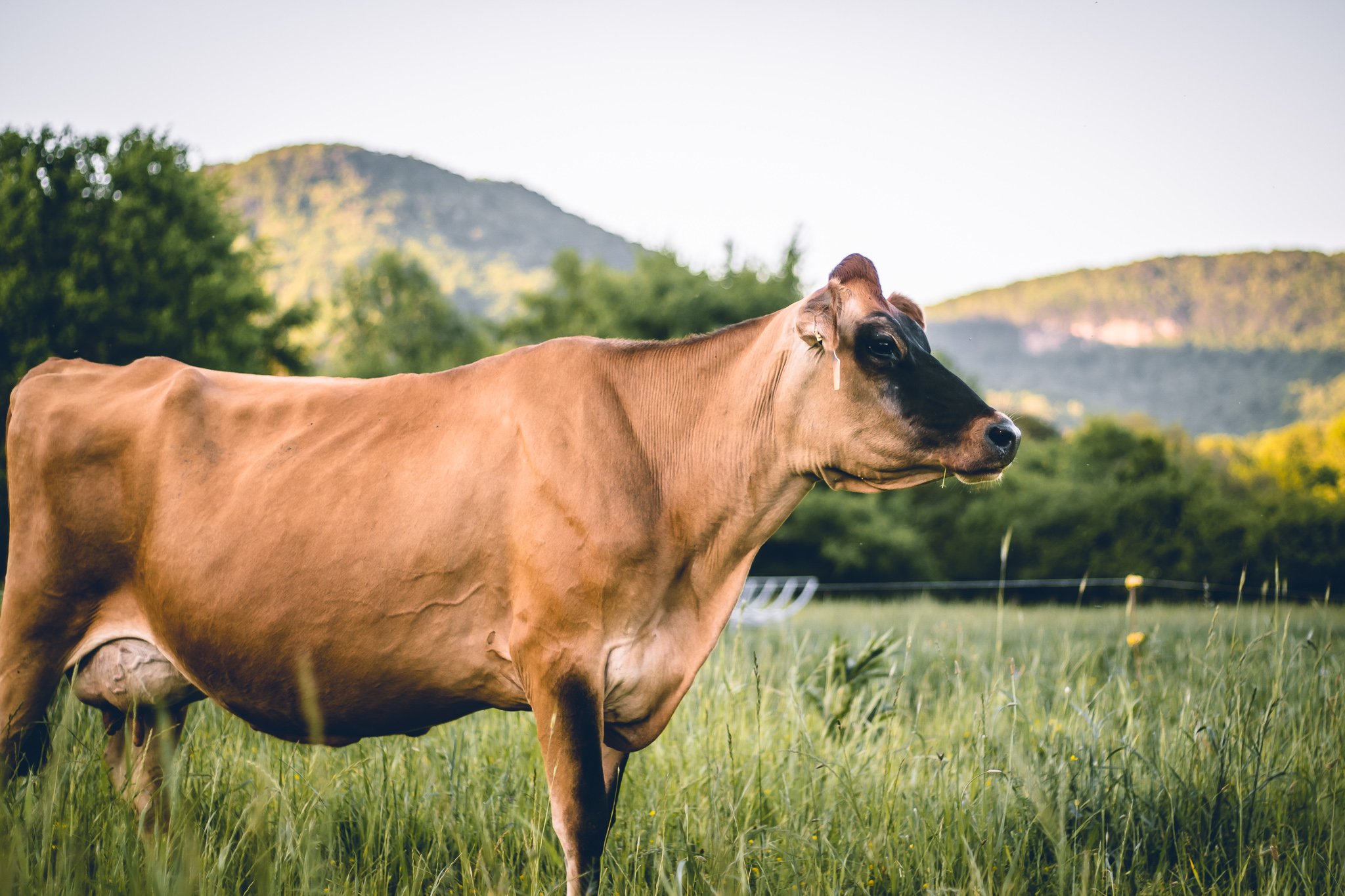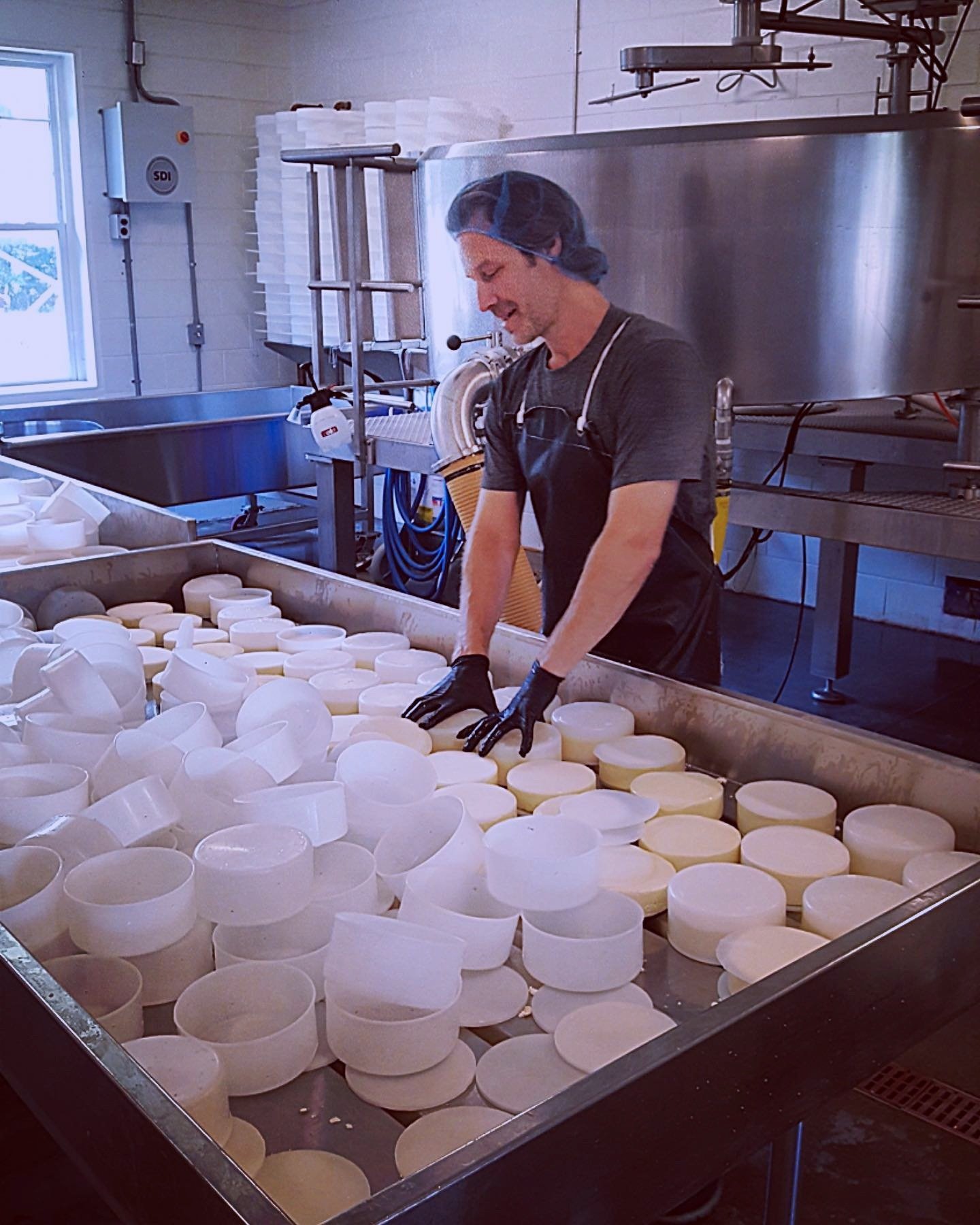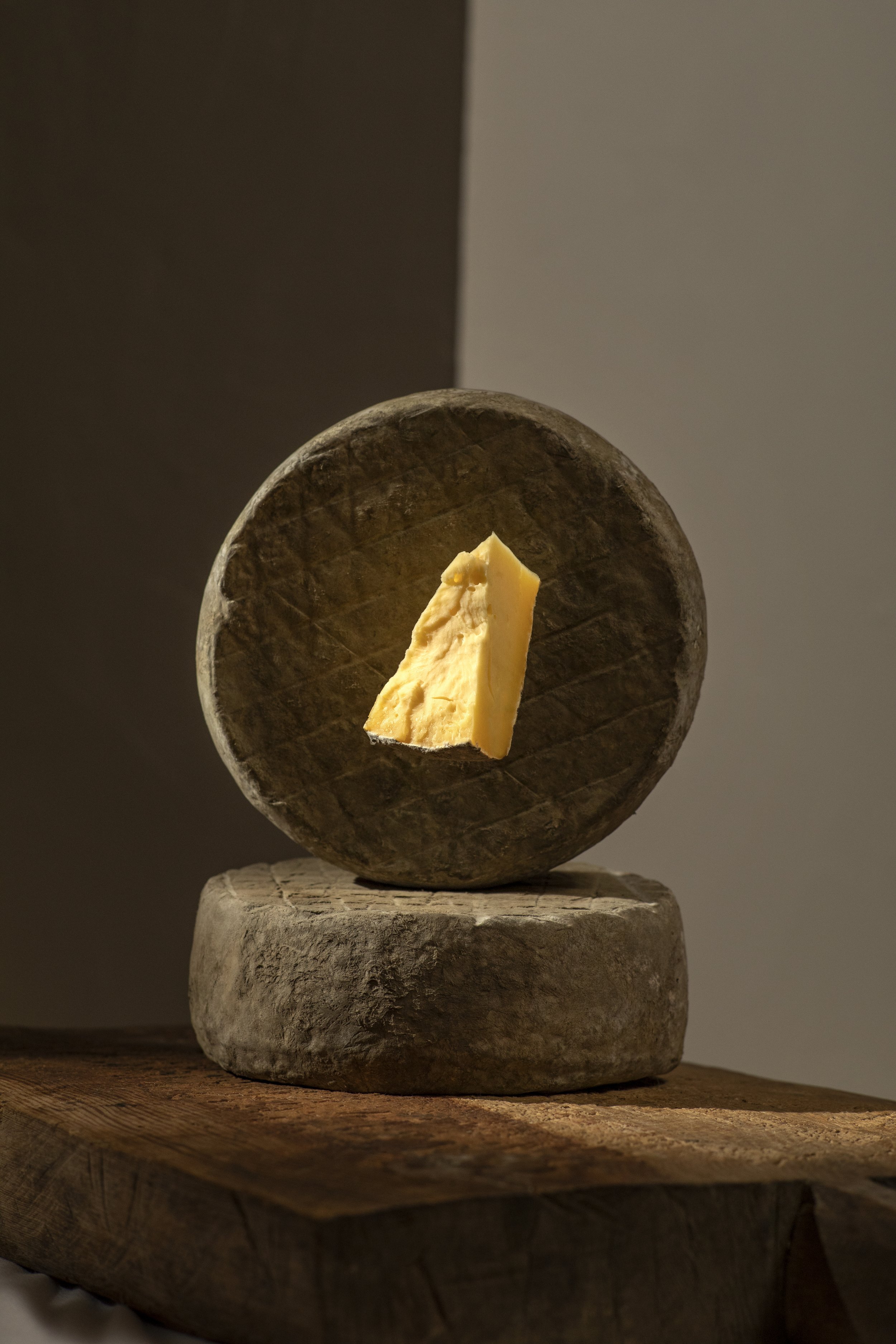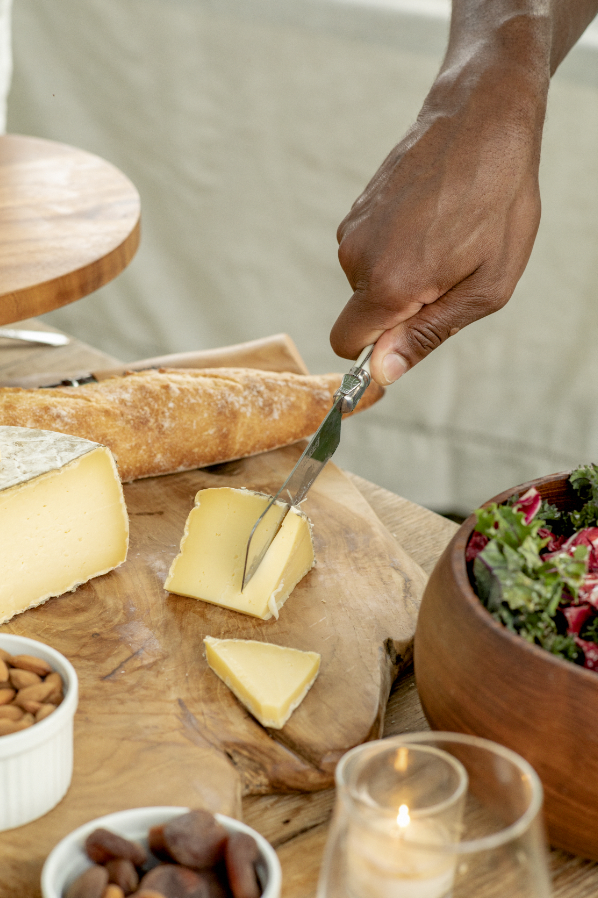Tomme Cheese - What is Tomme?
Tomme Cheese - What is Tomme?
If you're like us, you love gathering around a cheese plate; it could be at a summer picnic with friends, with family over the holidays, or even by yourself wrapped up in a blanket enjoying a midnight buffet of "night cheese." Chances are, in any one of these scenarios, Tomme cheese has made an appearance. And it's more than just a cheese plate staple. Tomme's buttery, semi-soft texture is a no-brainer for anything that calls for cheese. You can make macaroni and cheese out of Tomme,
Melt it in a grilled cheese sandwich,
Bake it in the oven, and serve it with crackers,
Or you can shred it up and make Aligot…
"What is aligot?" you say. More on that soon.
At first glance, Tomme is simply a crowd-pleasing alternative to cheddar. Still, upon closer observation, you might have noticed variations and complex nuances that make this cheese more enigmatic than meets the eye. The rind, often featuring mucor, for starters, is full of mystery. Furthermore, lots of cheeses out there use the word “Tomme” in their title, and not all of them look identical, either. Could they all really be the same thing?If your Sherlock sensors have gone off and your curiosity about Tomme has been piqued, you are in the right place. In this Tomme cheese guide, we hope to satisfy your curiosity and maybe give you a fun fact or two to share the next time you gather with friends. We'll pinpoint the origin of Tomme cheese.
We'll also discuss the characteristics to look for when tasting Tomme cheese and why "terroir" is so important to this cheese type.
We'll give you some expert-level knowledge on what to do about the rind and a few choice tips on how to describe the cheese you’re tasting.
Finally, we'll tell you how to make aligot (and other recipes made with Tomme).
You'll have more pieces of the Tomme cheese puzzle with inspiration to share with friends while tasting this delightful, complex, and ancient cheese. The origin of Tomme cheese
Tomme originated in the Alps (Tomme has many meanings, and one of them is literally "Alpine cheese"), a part of the world that adores cheese. Whether you're from there or have been there, you'll have noticed that cheese is central to all cultural activities. Apres ski? Mulled wine and cheese. Finished a long hike? Reward yourself with cheese. Made it to the yodeling festival? Help yourself to a plate of fried cheese.
Though Tomme cheese is predominantly produced across the Alpine regions of France and Switzerland, it originated in the valleys of Mount Maurienne, Tarentaise, Bauge, and Chablais, where France meets Switzerland and Italy.
Tomme emerged a while back (sometime during the late Middle Ages and early Renaissance period) as a solution for farmers who had leftover skimmed milk after finishing their butter production. Refrigeration wasn't a thing yet, so the only option was to preserve. Naturally, they made cheese.
Necessity was indeed the mother of invention for Tomme.
Those farmers must have been on to something because Tomme is just as popular today, made throughout the region and well beyond its borders.
Though no two Tommes are alike, terroir heavily impacts these varieties. As a result, cheeses belonging to this classification get their name from their place of origin.
Perhaps the most famous of them all is the one from the Savoie region known as Tomme de Savoie, but there is also:
Tomme Boudane
Tomme au Fenouil
Tomme de Crayeuse
Tomme d'Aydius
Tomme de Grandmère
Tomme Affinée
Tomme du Revard
Tomme de Montagne
And many more!
What does Tomme cheese taste like?
Tomme tastes like its home. We emphasize that because "Tomme Cheese" is a catchall phrase for a group of cheeses that resemble one another and are made in a similar fashion.
However, they can be vastly different from one another when it comes to flavor profiles.
As we mentioned above, terroir, or "taste of place," tremendously impacts the flavor of this cheese type, which is why their place of origin and their name are synonymous.
Sequatchie Cove Creamery turns beautiful grass into a shareable slice of the Sequatchie Valley.
“If this were France, we’d call Cumberland tomme d’Sequatchie.”
Tomme de Savoie, for example, often shows up with flavors of earth (like the smell of a damp cave) along with mushrooms, fruit, and nuts; a robust level of saltiness may be present and a raw quality to the palette.
Though no other Tomme will have the exact flavor profile of another, there are some common characteristics to look out for when tasting a Tomme cheese.
Tomme Cheese Characteristics
Cumberland is made from Cow’s Milk.
Milk types: Made from pasteurized or unpasteurized cow, goat, or sheep's milk.
Make: Pressed cheese
Size and Shape: A flat disk of cheese that is "bigger and rounder than thick. They can range from 6-40 inches (15-100 centimeters) around and are typically 3-4 inches (7-10 centimeters) thick."
Cave time: 1-4 months but can go longer up to 12. Typically turned manually every 2-3 days.
Rind color and observations: Grayish natural rinds that are typically rustic in appearance, sometimes fuzzy with grey, red, or yellow mold patches
Paste color: White to golden
Taste profile: As we mentioned, the terroir (grasslands, herd, terrain, seasonal variations, etc.) tremendously impacts the flavor of any Tomme cheese. That's why tasting a variety is fun; there's always something distinct to look out for. The texture is fudgy and smooth and springs between your teeth. Depending on the time in the cave, you may taste:
Earth
Green Grass
Caramel
Baked Potato
Pine
Licorice
Citrus
Lactic Notes
Mushrooms
Cool Caverns
Butter
Tropical Fruits
Broth
Nuttiness
Mushrooms
Cool Caverns
Butter
Tropical Fruits
Broth
Nuttiness
Earth
Green Grass
Caramel
Baked Potato
Pine
Licorice
Citrus
Lactic Notes
Mushrooms Cool Caverns Butter Tropical Fruits Broth Nuttiness Earth Green Grass Caramel Baked Potato Pine Licorice Citrus Lactic Notes
Sometimes, people just describe the flavors as "rustic, salty, and simple."
The best way to get a true sense of what a batch of Tomme cheese tastes like is to try it yourself.
Tomme beyond the Alps
New World cheese developed in the 17th century, and cheesemakers from Switzerland established some of the first cheese factories in Wisconsin. Since then, New World artisan cheese makers have emulated International styles in their own cheese-making endeavors. Tomme-style is now present and booming outside of the Alps.
Here are just a few Tomme cheeses made in the US:
Thomasville Tomme by Sweet Grass Dairy
Goat Tomme by Twig Farm
Appalachian by Meadow Creek Dairy
Shepsog by Grafton Village Cheese
And ours, Cumberland.
Cumberland is our flagship cheese inspired by the traditions and flavors of the Savoie region. Cumberland features our local terroir, the South Cumberland Plateau, with tasting notes similar to those of the Tomme de Savoie, including broth, mushrooms, salt, and a delightfully fruity and nutty finish. Some have even described it as having a "forest floor quality."
Cumberland just won first place in the American-made/ International Style category made from cow's milk from the American Cheese Society and first runner-up for best in show.
Tomme Cheese Recipes
Tomme is as approachable as cheddar cheese and works well in a number of familiar dishes. Here are some of our favorite uses for Tomme outside of the cheese plate.
Use Tomme in place of cheddar in your favorite mac and cheese recipe.
Use Tomme for potatoes au gratin.
Make a crowd-pleasing pimento cheese spread. See below for our favorite!
Pimento Cheese
8 ounces Cumberland or your favorite savory Tomme cheese, grated with a food processor or hand grater (not pre-grated)
¼ cup Duke's mayo
Scant ½ cup jarred pimento or other roasted red peppers (from a 7-ounce jar), finely diced
½teaspoon red-pepper flakes
½ teaspoon of Worcestershire sauce
½ teaspoon each of garlic and onion powder
1 tsp sriracha
Salt and black pepper to taste
Mix and refrigerate for at least an hour before serving.
Sean Brock's Herb Dumplings
¾ cup water
8 tablespoons (1 stick) of unsalted butter
1 cup of all-purpose flour
1 ½ teaspoons of salt
4 large eggs
½ cup grated Tomme cheese
¼ cup of finely chopped herb of your choice.
Combine the water and 6 tablespoons of the butter in a saucepan. Bring to a boil on high. Reduce and add in the flour and salt. Stir until thick. Cool mixture. Transfer the mixture to a stand mixer with a paddle attachment (or use a hand mixer). On low, beat the eggs in one at a time, incorporating them fully before adding the next. Add the Tomme cheese and chopped herbs.
Bring a saucepan to a boil and add one tablespoon of dumpling scoops to the water in batches of 4. Cook each batch for 3 minutes, and finish them in a skillet with brown butter.
Makes 24 dumplings.
Aligot
This guide wouldn't be complete without an aligot recipe. If you made it this far, you're probably as hungry as the devout travelers on a holy expedition (who traditionally received aligot) would have been.
Aligot was a refueling dish for those who crossed on foot en route to holy sites like Santiago de Compostela.
It was first whipped up by the Auvernauts, a group from the Middle Ages living in South Central France. In those days (approximately 980), the county was formed as the feudal domain for the Counts of Auvergne (sounds fancy).
The dish would have been made with Tomme de Laguiole, also known as Tomme fraiche, which is a fresh only semi-fermented version of Tomme, though if you're making it, you can use any type you like. The cheese is then blended with mashed potatoes, butter, cream, crushed garlic, and salt and pepper to taste.
Mix Aligot until it forms an elastic texture; the stretchier, the better. That's when you know you got your Aligot right. Today, it's still prepared and often served alongside pork or sausages and Auvergne red wine.
If you really want to get adventurous with your Aligot, try these variations.
There's so much more to say about Tomme, but most of that you will get in tasting it and enjoying it with friends (or on your couch).
Oh, and about that rind. You can eat it! Obviously, eating it will change the taste, and it's an earthy quality and texture that not everyone loves, so you do you, but yes, please enjoy Tomme cheese with the rind, at least on the first bite, and don't be worried if it's got a fuzzy velveteen exterior, that's Mucor and not only safe to eat but eating it will also elevate you to the status of "cheese nerd," which is a title earned by the brave few.





















